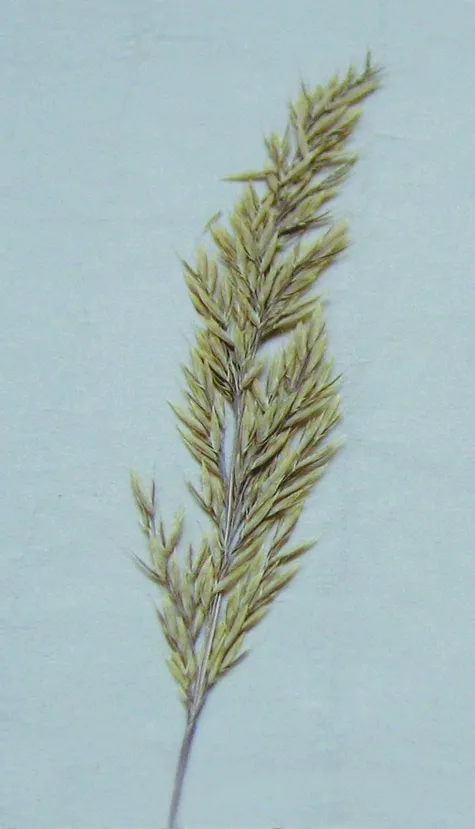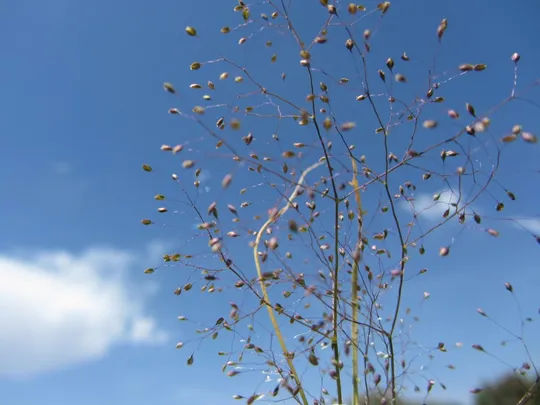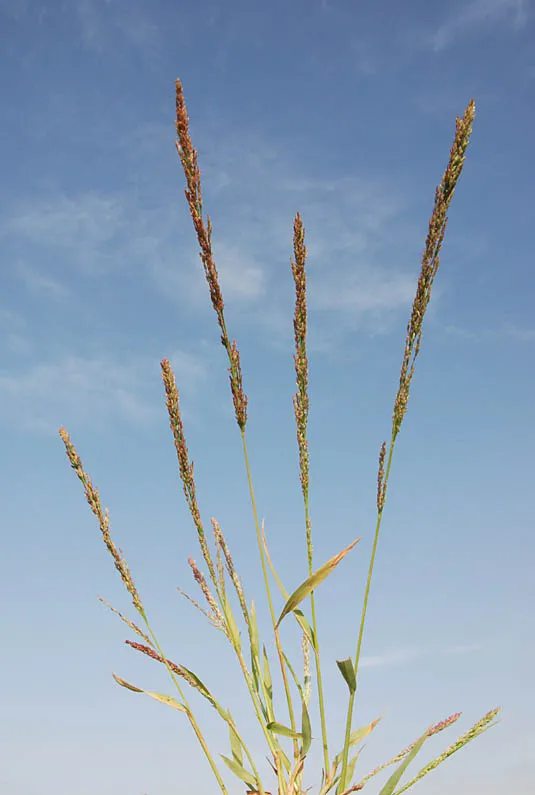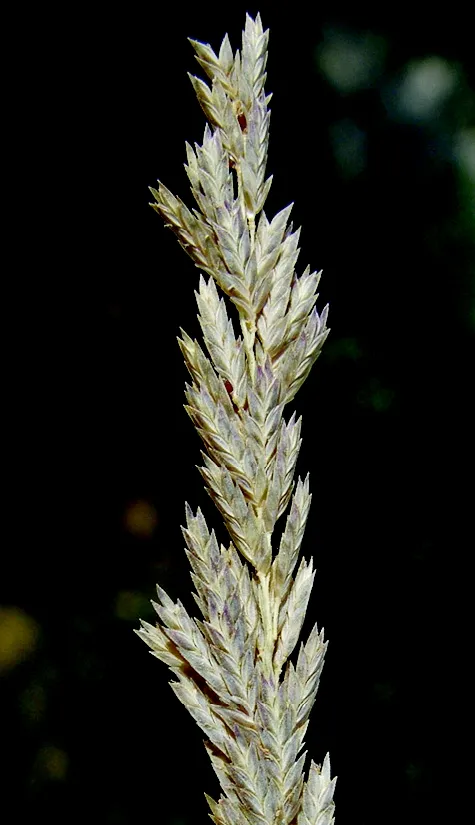Six-stamened Cut-grass
Leersia hexandra
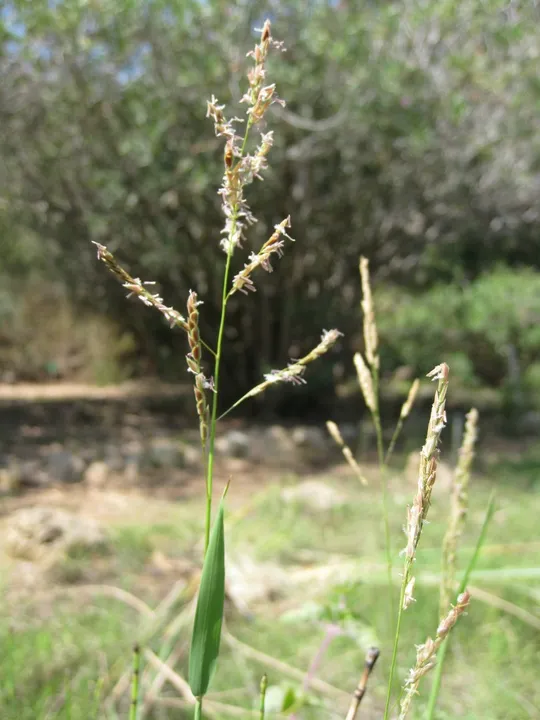
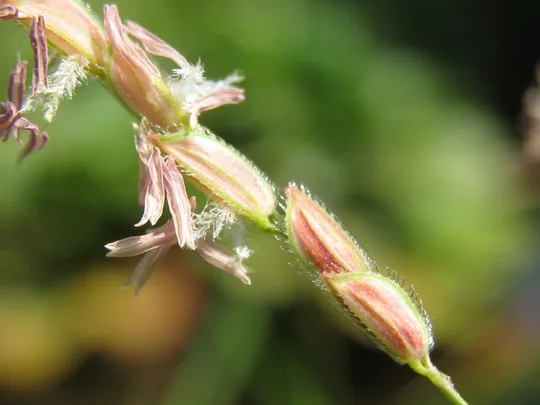
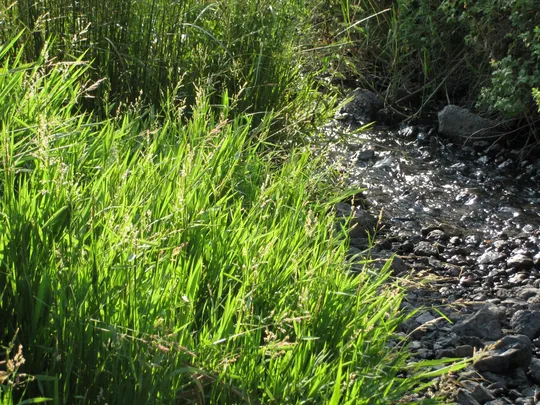
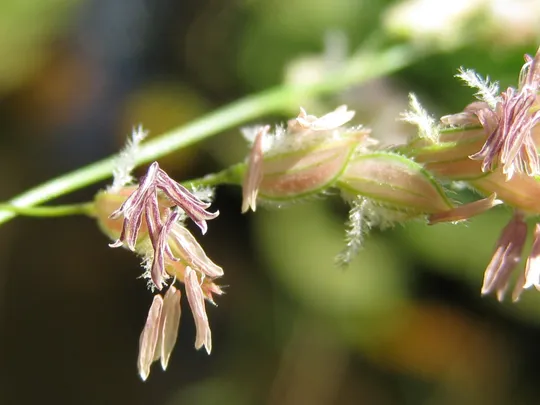
Leersia hexandra once grew in five regions in Israel: the Golan only in the foothills near the Hula Valley), the Hula Valley, Kinarot Valley, Sharon and Philistine Plain. It is extinct in all sites in the Philistine Plain (Wadi Rubin, Yarkon Stream,) and in the Sharon, it survived only in Ahu Binyamina and is extinct in the Batih Pond. In the Kinarot Valley L. hexandra grows only in the Bet Tsayda valley (in the Dalyot Stream estuary (Maǧrase) and at the mouth of the Jordan River). In the Golan, it grows only streams in which there is still running water, near the Hula Valley at low altitudes: Gilbon Stream, Wadi Shu'ah, En Divsha and En Azaz. These sites, at altitudes of 180-190 m above sea level, are very close to the Hula Valley, and their inclusion in the Golan is only a formality. The species is not found in the streams draining in the Bet Tsayda valley.
The Hula Valley is the region where L. hexandra is most common and its sites are not yet extinct, particularly in the eastern springs: it grows in En Tina, En Divsha, En Bdolah, in the Ahu Gonen and at the Nuhela Springs. It is apparently extinct in the Te'o Spring (Ǧahula) and the Enan Stream, where a large population was previously known. There is also a single uncertain observation from Tel Dan.
Marshes and wetlands, particularly at the edges of water channels, water flowing from springs and stream banks. Forms tall (50-80 cm) "grassy” patches at the edges of streams and in moist depressions at the edges of ponds and marshes.
Leersia is a genus in the Gramineae (Poaceae) family, which includes 17 species found in tropical and subtropical areas, especially in the Old World. Only one species reaches Europe (Leersia hexandra in Spain). The genus is close to the genus Oryza, but differs from it in the existence of sterile pales in the inflorescence. The seeds of another Leersia species are used as an edible cereal similar to rice.
• Leersia hexandra is known from 17 sites today, most of them concentrated in the Hula Valley.
• The habitat is severely threatened and there is concern of accidental destruction and of use of water sources for various purposes.
• It is difficult to count the number of plants due to its dense grassy growth; on most sites the number of plants is small, but at some sites (En Tina, Ahu Gonen in the past, Ahu Binyamina) 300-350 plants were counted. It is possible that L. hexandra is a plant that thrives and produces seeds only when it is dominant, and on other sites, it is dying out.
• Almost all sites in the Hula and Bet Tsayda valleys and in the Sharon are located in nature reserves, but proper management should be implemented to stabilize a large population of L. hexandra. Overgrazing due to uncontrolled cattle grazing in the northern reserves (e.g. Nuhela Springs) endangers the population.
A survey of wetlands in the Jordan valley and the Golan Heights slopes should be conducted to locate Leersia hexandra populations. The populations at En Tina and Ǧalbina should be monitored, and the Enan Stream population should be reintroduced and the habitat and water regime rehabilitated. (The same action was recommended for Ammannia baccifera and Stachys longispicata). Cattle should be removed from all the reserves where L. hexandra grows, and it should be restored after a year in a controlled and planned manner.
Leersia hexandra grows in many regions, its distribution center is in tropical and subtropical areas: in Spain and the Madeira Islands and in all of the Maghreb countries, Libya, Egypt and Syria-Lebanon. It is absent from in the northern Mediterranean from Turkey to France. In the Euro-Siberian region, it is known only from the Caucasus and on the Black Sea coast. In East Africa, it grows in Sudan, Ethiopia, and Kenya down to Tanzania. In Africa – Angola, South Africa and the tropical African countries. It is also known from India and from South America, but it is not known whether it grows there naturally or is an introduced species.
Leersia hexandra is a perennial grain that grows in wetlands. Its conservation is similar to that of many other of Gramineae (Poaceae) and Cyperaceae species limited to wetlands, whose populations and sites in Israel have significantly decreased over the last sixty years. No rare plant survey was conducted in the Hula and Jordan valleys, consequently our knowledge of plant diversity in the area, and rare wetland species in particular, is almost negligible. It is also very difficult to identify and distinguish between the Gramineae (Poaceae) and Cyperaceae species in the area. A thorough survey should thus be conducted, which should include collection, identification and systematic analysis. At the same time action should be taken to declare as many sites as possible, in which L. hexandra grows, as nature reserves and to rehabilitate its habitat and improve water quality.
Current Occupancy Map
| 1000 squre meter pixel | 5000 squre meter pixel | 10000 squre meter pixel | |
|---|---|---|---|
| number of observations | 0 | 0 | 0 |
| in total pixels | 0 | 0 | 0 |
| Family | Gramineae |
| Classification | On the endangered species list |
| Ecosystem | Mediterranean humid |
| Chorotype | Tropical Multi-Regional (Mediterranean) |
| Conservation Site | En Tina south to Gonen |
| Rarity |
1
2
6
|
|---|---|
| Vulnerability |
0
4
4
|
| Attractiveness |
0
0
4
|
| Endemism |
0
0
4
|
| Red number |
1
3.2
10
|
| Peripherality | 0 |
| IUCN category | DD EW EX LC CR EN VU NT |
| Threat Definition according to the red book | Vulnerable |
 Based on:
Based on:
